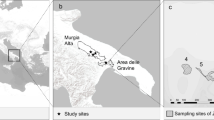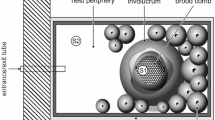Abstract
I studied relationships between temporal patterns of host availability, brood parasitism, and egg mass for the parasitic brown-headed cowbird (Molothrus ater). At a study site consisting largely of edge habitat in north-eastern Illinois, I found 834 bird nests from 27 species. A total of 407 cowbird eggs and nestlings were found in these nests over three laying seasons. Nearly all (n= 379; 93%) were found in the nests of seven host species. For these species and all taken together, weekly nest availability generally decreased whereas parasitism frequency generally increased throughout the cowbird laying season, but the proportions of nests parasitized and the mean number of cowbird eggs in them did not. Additionally, no correlation was found between the proportions of nests parasitized and nest availability. Cowbird egg mass generally increased throughout the laying season, indicating that foraging conditions improved and that, early in the laying season, egg mass and quality may be less important than quantity. Consistently high weekly levels of parasitism indicate that cowbird reproduction was less limited by resources needed for egg production and more by the availability of suitable host nests. Fluctuating weekly host availabilities suggest that previously established, constant rates of cowbird egg laying would produce an excess of eggs during periods of low host availability. Further, the low frequency of parasitism (1%) of nests in stages too advanced for successful parasitism, and of abandoned nests, is consistent with the hypothesis that cowbirds' consistently high rate of egg production helps assure an egg is available when an appropriate nest is found. Frequently, nests were parasitized multiple times, raising the possibility that cowbirds were interfering with their own reproduction. A diverse host community increases the possibility that a decline of any one host species is unlikely to affect cowbird reproduction significantly.
Similar content being viewed by others
Author information
Authors and Affiliations
Additional information
Received 11 July 1997 / Accepted: 31 March 1998
Rights and permissions
About this article
Cite this article
Strausberger, B. Temporal patterns of host availability, brown-headed cowbird brood parasitism, and parasite egg mass. Oecologia 116, 267–274 (1998). https://doi.org/10.1007/s004420050588
Issue Date:
DOI: https://doi.org/10.1007/s004420050588




